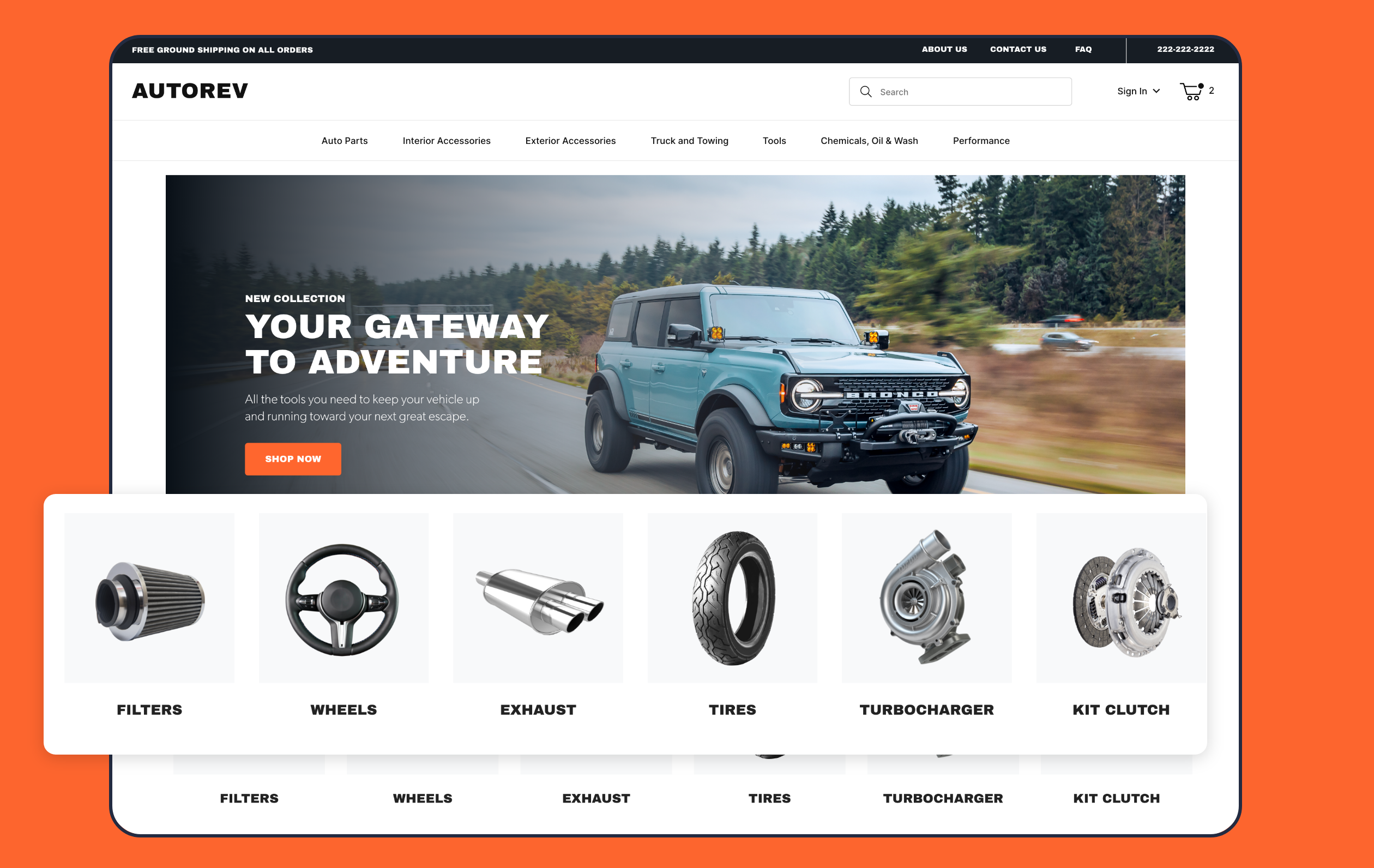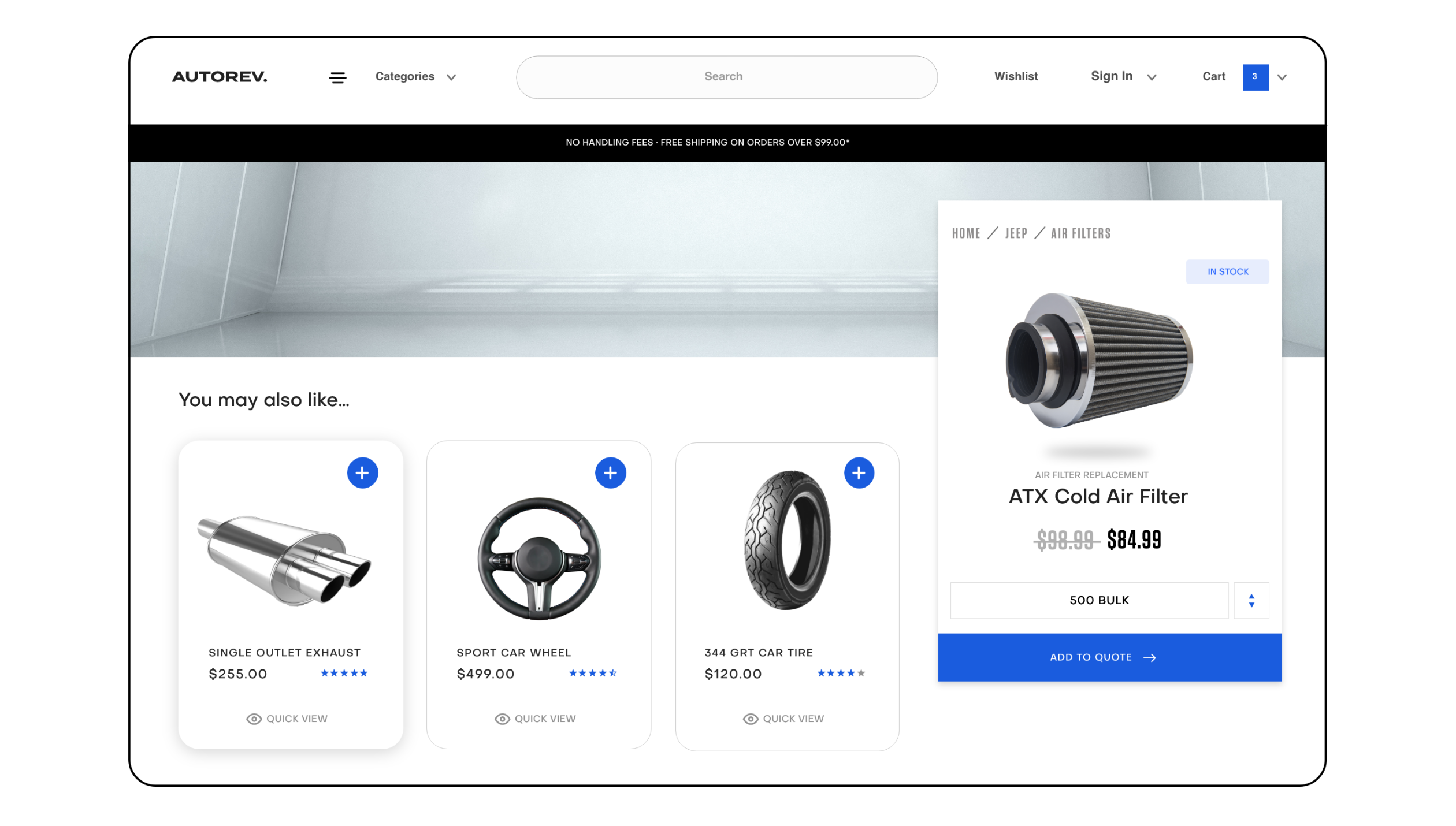
See why top ecommerce brands use Miva’s no-code platform to run
multiple stores, manage massive catalogs, and grow their revenue.
For many businesses that have relied on paper catalogs, moving online can seem daunting. There’s a fear that the complexities of managing products and inventory digitally won’t match the tried-and-true methods of paper catalogs. However, embracing the digital shift offers many advantages that could streamline your business and set you ahead of competitors.
Paper catalogs have served B2B sellers well for years. Buyers have used them to compare products, reference items, and place orders. They offer a tangible experience that allows customers to mark pages, write notes, and manually browse offerings. However, they’re not without drawbacks.
The space limitations of paper catalogs mean that product details are often constrained, leaving out essential specifications or excluding certain items from the catalog. Plus, keeping the catalog updated with new products, revised pricing, or discontinued items is costly and time-consuming.
When customers experience the convenience of online shopping, where they can access up-to-date information, easily search through catalogs, and place orders in real time, the appeal of paper catalogs starts to fade. Without an online presence, you risk losing valuable business to competitors who have embraced ecommerce solutions and the best ecommerce platforms available.
A digital catalog, often hosted on an ecommerce platform, is an electronic version of the traditional paper catalog. Unlike PDFs or static images of a printed catalog, a digital catalog offers an interactive experience. It lets customers browse, search, and order products from a comprehensive, constantly updated database. With a compelling product catalog management system, B2B sellers can provide a much more efficient, user-friendly shopping experience for their customers.

As more businesses transition online, the concept of cataloging has evolved. Cataloging in ecommerce refers to the process of organizing, presenting, and selling products online. It allows businesses to showcase products with rich details, images, and customer reviews. Online catalogs can be customized, and the information can be kept up to date with minimal effort. Catalog management in ecommerce allows sellers to maintain and optimize their product listings across multiple channels, ensuring consistency and ease of access for customers.
Paper catalogs can be expensive and time-consuming to produce. Once printed, they are static and can’t be updated until the next edition is released. This makes them less flexible and less responsive to changes in inventory or pricing.
In contrast, digital catalogs are easily updated, allowing sellers to add, remove, or adjust product information in real-time. They also offer greater space to include more detailed product descriptions, images, videos, and specifications. With a custom ecommerce solution, your entire product offering can be made accessible to buyers anytime, anywhere, and at the convenience of a few clicks.
Ecommerce catalog management involves ensuring that your digital catalog is organized, up-to-date, and optimized. This requires tools that integrate seamlessly with your sales and inventory systems, offering features like real-time inventory tracking, automated price updates, and personalized product recommendations. The goal is to streamline the catalog experience for both sellers and buyers by keeping the information accurate and consistent.
In the competitive B2B landscape, catalog management is crucial for success. A well-organized and easy-to-navigate catalog enhances the user experience and boosts sales. By offering clear product details, efficient search functionality, and seamless ordering, wholesalers can build stronger relationships with their customers. Effective catalog management not only improves the customer experience but also simplifies back-end operations, saving time and reducing errors.
A well-organized catalog ensures a positive experience for potential customers. Features like faceted search, categories, and interactive tools help guide customers to find exactly what they’re looking for. High-quality product pages with detailed specifications and images ensure that the buyer can confidently make a purchase. This, in turn, reduces abandonment rates and boosts conversion rates.
Some industries particularly benefit from the efficiencies of digital catalogs:

Selling across multiple platforms requires careful attention to product data accuracy and consistency. Catalog management systems allow sellers to ensure their product information is aligned across all sales channels, whether on branded websites or third-party marketplaces. This maintains trust and improves the customer experience.
Digital catalogs offer numerous benefits that directly impact sales:
Access Anytime: With an online catalog, your products are available 24/7, allowing customers to browse and order at their convenience.
Seamless Shopping: Buyers can research products, check out instantly, and even use features like quick order options for repeat purchases.
Engagement: By including multimedia elements such as videos and interactive features, digital catalogs engage customers and help them make purchasing decisions faster.
Moving from paper to a digital catalog requires planning and attention to detail. Make sure that your website and communication strategies are in place before launching your digital catalog. Key considerations include:
Sync Product Information: Ensure that your product names, SKUs, and model numbers are consistent across both paper and online catalogs.
Optimize for Search: With large inventories, using faceted search can help customers find the right product without sifting through pages.
Promote the Digital Catalog: Use your print catalog to drive traffic to the online catalog and offer special discounts for first-time digital buyers.
Mobile Optimization: Many buyers are on the go, so ensure your digital catalog is mobile-friendly.
While digital catalogs offer various benefits, you don’t have to fully abandon your paper catalog. Consider reducing print runs, making them available by request, or using them to drive customers to your online catalog for a better experience. Physical catalogs can still play a role, but digital catalogs will become the centerpiece of your B2B business moving forward.
Beyond customer convenience, digital catalogs offer numerous benefits for sellers:
Instant Product Updates: You can release new products as soon as they’re available, avoiding the delays inherent with print catalogs.
Volume Discounts: Ecommerce solutions make it easier to apply discounts to larger orders, and customers can see the changes to their cart in real time.
Product Bundling: Use custom ecommerce solutions to recommend complementary products and upsell, increasing your average order value.
Standing Orders: Enable customers to set up recurring orders, streamlining their purchasing process and increasing lifetime customer value.
A digital catalog is a powerful tool that can improve efficiency, enhance the customer experience, and drive sales. By investing in the best ecommerce platform for your business and utilizing enterprise ecommerce solutions, you set your business up for growth and success in the modern marketplace. If you haven’t already made the shift, now is the time to go digital. Your competitors who have embraced the change are likely already reaping the benefits. Why wait?
Share this article:
No worries, download the PDF version now and enjoy your reading later...
Download PDF Miva
Miva
Miva offers a flexible and adaptable ecommerce platform that evolves with businesses and allows them to drive sales, maximize average order value, cut overhead costs, and increase revenue. Miva has been helping businesses realize their ecommerce potential for over 20 years and empowering retail, wholesale, and direct-to-consumer sellers across all industries to transform their business through ecommerce.
Visit Website